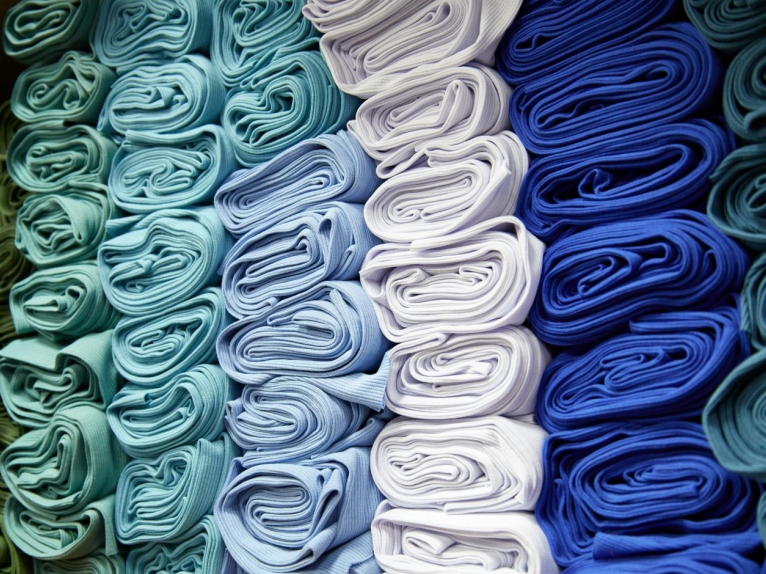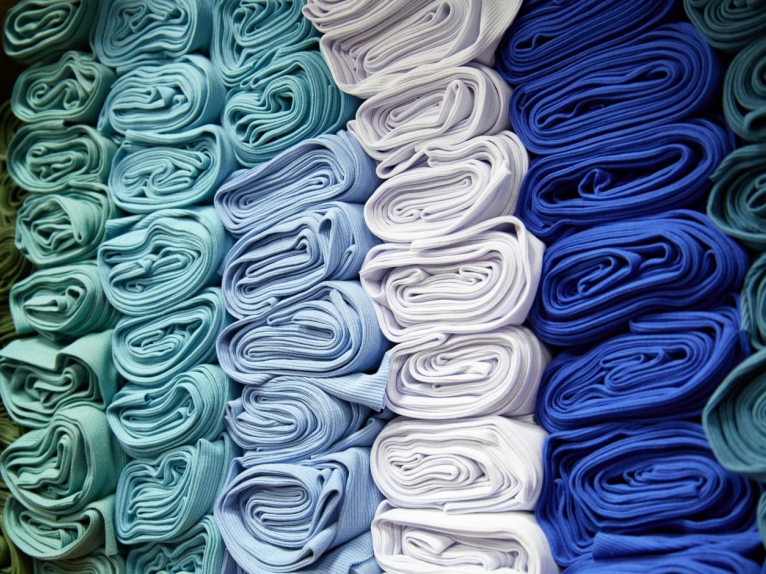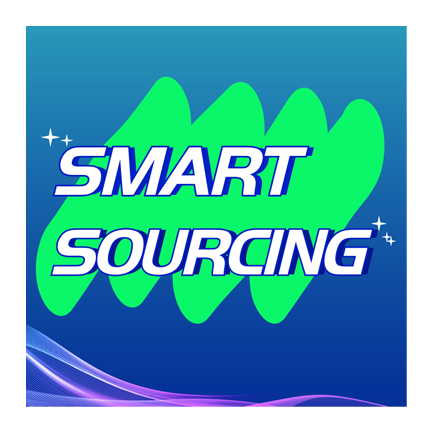
In the fashion industry, fabric sourcing serves as a bridge connecting creativity and the market. It determines the final form and texture of the product, profoundly influencing the market competitiveness of the brand.
In 2024, with the increasing demand for sustainability and personalization among consumers, the field of fabric sourcing is facing unprecedented changes.

From the rise of eco-friendly materials to the emergence of digital procurement platforms, industry trends indicate a high pursuit of transparency, flexibility, and innovation. However, this process also brings challenges, such as cost control, increased complexity in the supply chain, and the continuous improvement of sustainability standards.
This article will provide you with a detailed guide to help you effectively tackle challenges and seize opportunities in the new year.
Understand fabric sourcing
What is fabric sourcing?
Definition and Scope
Fabric sourcing is a comprehensive process that begins with design requirements and ends with the successful acquisition of fabrics. This process involves not only the selection of fabrics themselves, but also careful consideration of various aspects such as raw materials, samples, prices, and contracts. Specifically, fabric sourcing personnel need to have a deep understanding of the types, characteristics, prices, and other information of fabrics in the market, and then screen and compare them according to design requirements to ultimately determine the most suitable fabric. In this process, they also need to confirm samples with suppliers, negotiate prices, and sign a formal procurement contract to ensure the quality and delivery date of the fabrics.
The role in the supply chain
Fabric sourcing plays a pivotal role in the supply chain, connecting designers, purchasing managers, suppliers, manufacturers, and ultimately consumers. Designers are the starting point of fabric sourcing, proposing design concepts based on fashion trends and consumer demands, and making specific requirements for fabric selection. Purchasing managers are responsible for translating the designers' needs into actual purchasing plans and communicating and negotiating with suppliers. Suppliers are the direct source of fabric sourcing, providing a wide variety of fabrics for purchasing managers to choose from. Manufacturers produce and process clothing based on the purchased fabrics. Ultimately, consumers are the ultimate beneficiaries of fabric sourcing, experiencing the quality and comfort of fabrics through the purchase of clothing.
The importance of fabric sourcing
Impact on product quality
Fabric, as the foundation of clothing, directly determines the durability, comfort, and appearance of the garment. High-quality fabrics not only possess excellent physical properties such as strength, wear resistance, and wrinkle resistance, but also bring a better feel and appearance to the clothing. Therefore, fabric sourcing is crucial for ensuring the quality of clothing products. By selecting high-quality fabrics, companies can enhance the competitiveness of their products and meet the expectations and needs of consumers.
Cost impact
Fabric cost is an important component of the production cost of clothing, usually accounting for a large proportion of the total production cost. Therefore, the rationality of the fabric sourcing strategy is directly related to the company's cost control and profitability. Through effective fabric sourcing strategies, companies can reduce fabric costs while ensuring product quality, thereby improving overall production efficiency and economic benefits. This requires purchasing personnel to have keen market insight and good negotiation skills, in order to strive for the most favorable purchasing conditions for the company in the fierce market competition.
Key considerations before fabric sourcing
Determine your needs for fabric sourcing
In the preliminary stage of fabric sourcing, it is crucial to clarify and refine the requirements. This not only affects the quality and market positioning of the final product, but also directly impacts the efficiency and cost control of the procurement process.
Fabric type and usage
When choosing fabrics, the first thing to consider is the design requirements. Different designs require different types of fabrics to support their style and functionality. For example, natural fibers such as cotton and linen are often used for casual and summer clothing due to their breathability and comfort; while synthetic fibers such as polyester and nylon are more suitable for sportswear or clothing that requires special functionality due to their wear resistance and easy care characteristics. Blended fabrics combine the advantages of natural and synthetic fibers, providing more options. In addition, the applicable scenarios of fabrics are also a key consideration. For example, formal occasions may require fabrics with a more crisp and glossy appearance, while casual occasions focus more on comfort and freedom.
Budget constraints
After clarifying the design requirements, the next thing to consider is the budget. The price of fabrics varies due to factors such as material, craftsmanship, and brand, so setting a reasonable budget range is crucial for cost control. Purchasing personnel need to find the most cost-effective option while ensuring the quality of the fabric. This may require multiple rounds of negotiations with suppliers or searching for alternative fabrics to meet budget requirements. By balancing quality and cost, the economic feasibility of the purchasing plan can be ensured, laying a solid foundation for subsequent production and sales stages.
Market research
After determining the basic needs, conducting market research is the next crucial step. Market research helps procurement personnel to have a more comprehensive understanding of the market situation, thus making more informed decisions.
Analyze trends
Paying attention to international fabric exhibitions, fashion magazines, and social media is an effective way to understand the latest fashion trends, color forecasts, and technological innovations. These channels not only provide a wealth of fabric information but also help procurement personnel grasp the overall direction of the market. By understanding the current fashion trends, procurement personnel can more specifically select fabrics to meet the needs and expectations of consumers. At the same time, paying attention to technological innovations can also help procurement personnel discover new types of fabrics and processing techniques, thereby enhancing the competitiveness and innovation of products.
Competitor analysis
Researching the fabric types and pricing strategies used by competitors is another important aspect of market research. By understanding the procurement strategies of competitors, procurement personnel can identify their own strengths and weaknesses, and thus formulate more targeted procurement plans. For example, if competitors mainly use high-end fabrics, procurement personnel can consider purchasing similar but more affordable fabrics to provide more competitive products. Alternatively, by discovering fabric types or technologies not covered by competitors, procurement personnel can create unique selling points and differentiated advantages for the brand.
Determining demand and conducting market research are indispensable steps in the fabric sourcing process. They provide a clear direction and basis for subsequent procurement work, ensuring the relevance and effectiveness of the procurement plan.
Supplier type
Regional suppliers and international suppliers
In the process of fabric sourcing, choosing between regional suppliers and international suppliers is a question that requires comprehensive consideration. Both have their own advantages and disadvantages, as follows:
Advantages and disadvantages
Regional suppliers:
Advantages:
1. Easy to communicate: Due to similar language and cultural backgrounds, communication efficiency is high, enabling faster problem resolution.
2. Fast delivery: The domestic logistics system is relatively mature, with a short delivery cycle, which helps to quickly respond to market demands.
3. After-sales Service: Domestic suppliers usually offer more convenient after-sales services, such as returns and exchanges, technical support, etc.
Disadvantages:
1. Limited options: In certain specific areas or high-end fabric sourcing, the options may be relatively limited.
2. Lack of innovation: Compared to international suppliers, domestic suppliers may have a certain gap in fabric innovation and design.
International suppliers:
Advantages:
1. Diverse Choices: International suppliers can usually offer a more diverse range of fabric choices, including the latest technological fabrics, uniquely designed fabrics, etc.
2. High Quality: Many international suppliers possess advanced production equipment and techniques, ensuring the quality of their products.
3. Strong innovation capability: International suppliers usually have stronger capabilities in fabric research and development and innovation.
Disadvantages:
1. Higher Cost: Due to factors such as transportation costs and tariffs, the cost of international procurement is usually higher.
2. Complex logistics: There are many international logistics links, which may pose risks such as delays and damages.
3. Communication barriers: Language and cultural differences may lead to reduced communication efficiency.
Cost and quality considerations
When selecting suppliers, it is necessary to comprehensively evaluate factors such as transportation costs, tariffs, and sample quality. For cost-sensitive enterprises, domestic suppliers may be more attractive; while for enterprises pursuing quality and innovation, they may be more inclined to choose international suppliers. At the same time, enterprises can also reduce procurement costs by establishing long-term partnerships and bulk purchasing. In terms of quality, regardless of whether domestic or international suppliers are chosen, strict control of sample quality should be enforced, and suppliers should be required to provide relevant quality certifications and testing reports.
Evaluate supplier reliability
Evaluating the reliability of suppliers is a crucial step in ensuring the smooth progress of fabric sourcing. Here are some specific evaluation methods:
Certification and Standards
Check international standard certification: such as ISO (International Organization for Standardization) certification, which indicates that the supplier has met international standards in production processes, quality management, and other aspects.
Focus on environmental certification: such as OEKO-TEX (International Ecological Textile Association) certification, which helps ensure the safety of fabrics and meets environmental requirements.
Other professional certifications: such as GRS (Global Recycled Standard) certification, which indicates that the supplier focuses on sustainability and environmental protection in the production process.
Reviews and recommendations
Refer to industry reports: understand the supplier's position and reputation within the industry.
Customer feedback: Collect and analyze the evaluations and feedback from existing customers to understand the supplier's service level, delivery punctuality, product quality, and other aspects of performance.
Third-party evaluations: Ratings and evaluations from professional institutions or platforms, which are usually more objective and comprehensive.
Evaluating the reliability of suppliers requires comprehensive consideration of multiple factors. Through rigorous evaluation and screening, companies can select suitable suppliers, laying a solid foundation for the success of fabric sourcing.
Fabric Sourcing Process
Fabric sourcing steps
Fabric sourcing is a systematic and complex process that requires following certain steps to ensure the efficiency and quality of the procurement. The following are the main steps of fabric sourcing:
Preliminary research
In the preliminary research stage, procurement personnel need to extensively collect fabric samples, which can come from domestic or international suppliers. By comparing the prices, quality, and delivery times of different samples, procurement personnel can conduct a preliminary screening of suppliers. The goal of this step is to narrow down the selection and lay the foundation for subsequent detailed evaluation and testing.
During the process of collecting samples, procurement personnel need to pay attention to the material, texture, color, and other characteristics of the fabric to ensure they meet the design requirements. At the same time, they also need to pay attention to the supplier's production capacity, delivery speed, and after-sales service to ensure that the supplier can meet the procurement requirements.
Sample testing
Sample testing is a crucial step in fabric sourcing. Among the suppliers initially selected, procurement personnel need to choose a few for sample testing. The testing typically includes physical performance tests, color fastness testing, etc., to ensure that the fabric meets design requirements and quality standards.
Physical performance testing mainly evaluates the strength, abrasion resistance, wrinkle resistance, and other characteristics of fabrics, while color fastness testing focuses on the color stability of fabrics under conditions such as washing and exposure to sunlight. Through these tests, procurement personnel can more accurately understand the quality and performance of fabrics, thus providing a basis for subsequent procurement decisions.
Negotiations and contracts
After completing the preliminary research and sample testing, the procurement personnel need to negotiate with the selected supplier and sign a formal contract.
Pricing strategy
During the negotiation process, pricing strategy is the focus of attention for both parties. Purchasing personnel need to negotiate reasonable prices with suppliers based on market research and cost analysis. They can consider factors such as volume discounts and long-term cooperation incentives to reduce procurement costs. At the same time, purchasing personnel also need to pay attention to the quality and service behind the price, ensuring that the purchased fabrics offer the best value for money.
Terms and Conditions
Before signing the contract, both parties need to clarify key terms such as delivery time, quality standards, and liability for breach of contract. These terms are an important foundation for protecting the rights and interests of both parties and are also crucial to ensuring the smooth progress of procurement. Procurement personnel need to carefully review the contract terms to ensure that they comply with the company's procurement policies and legal and regulatory requirements. At the same time, they also need to communicate fully with the supplier to ensure that both parties have a consistent understanding of the contract terms.
Fabric sourcing steps, negotiation, and contract signing are indispensable parts of the fabric sourcing process. By following these steps and precautions, procurement personnel can complete the fabric sourcing task more efficiently, providing strong support for the company's production and sales.

Click the image to learn more
Sustainability in fabric sourcing
The importance of sustainable practices in fabric sourcing
In the context of the increasing global awareness of environmental protection, sustainable practices are particularly important in fabric sourcing and production. It not only concerns environmental protection but also directly affects the corporate social responsibility and brand image.
Environmental impact
In the fabric production process, the use of chemical dyes and the disposal of waste are two major sources of environmental pollution. To reduce these impacts, companies need to adopt a series of sustainable practices. For example, reducing the use of chemical dyes and switching to more environmentally friendly dyeing techniques; promoting the recycling and reuse of fabrics, and reducing the carbon footprint in the production process by recycling and reusing waste fabrics. These measures not only help protect the environment but also enhance the company's environmental image.
Consumer demand
With the increasing awareness of environmental protection among consumers, they are increasingly inclined to choose products that use sustainable fabrics and environmentally friendly production methods. Therefore, sustainable fabrics have become one of the important factors that attract customers. By sourcing and using sustainable fabrics, companies can meet this demand of consumers, thereby enhancing brand competitiveness and market share.
How to source fabrics sustainably
In order to achieve sustainable fabric sourcing, enterprises need to take the following measures:
Eco-friendly materials
When sourcing fabrics, enterprises should prioritize those made from environmentally friendly materials. For instance, organic cotton is a type of cotton that has not undergone chemical treatment, and its production process has a minimal impact on the environment; bamboo fiber is a renewable resource with good breathability and moisture absorption; recycled polyester is a fabric made from recycling waste such as discarded plastic bottles, which is both environmentally friendly and economical. By choosing these environmentally friendly materials, enterprises can reduce the environmental impact during the production process of fabrics.
Ethical supplier practices
In addition to paying attention to the environmental friendliness of fabrics, companies also need to ensure that suppliers adhere to fair trade principles. This includes protecting workers' rights and interests, such as providing reasonable wages and benefits, and ensuring a safe and hygienic working environment. At the same time, companies should also avoid using child labor and ensure the ethical and legality of the supply chain. By cooperating with ethical suppliers, companies can ensure that the purchased fabrics are not only environmentally friendly but also meet social responsibility requirements.
Sustainable practices are of great significance in fabric sourcing. By adopting environmentally friendly materials and collaborating with ethical suppliers, companies can reduce the environmental impact during the production process, meet the environmental needs of consumers, and thereby enhance brand competitiveness and social responsibility image.
END
Here, we encourage you to apply the strategies you have learned to practice, continuously optimize the procurement process, and adapt to the rapidly changing market demands.
Looking ahead, fabric sourcing will place greater emphasis on technological innovation, sustainable development, and social responsibility. By grasping these trends, you will be able to stand out in the fiercely competitive fashion industry.
Smart Sourcing Content Team
Article by Smart Sourcing Content Team
The Smart Sourcing Content Team is committed to delivering high-quality, easy-to-understand information that helps our audience navigate the complexities of global sourcing. Our team of writers has extensive experience in producing articles across various fields such as procurement, supply chain management, market trends, and industry best practices. We specialize in sectors like apparel, textiles, and consumer goods, providing targeted insights to help businesses in these industries o




